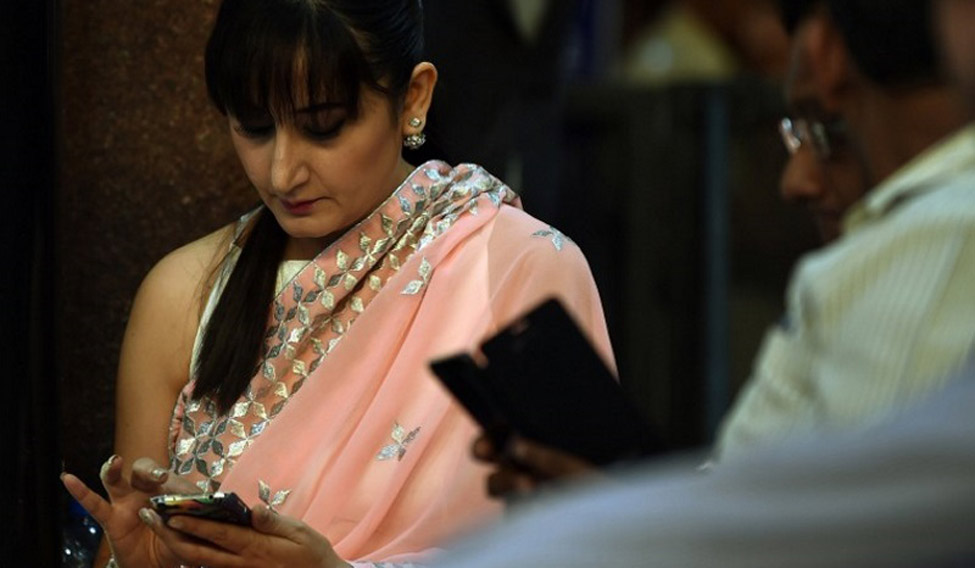Mobile data traffic for every smartphone user in India will touch 11 GB per month, says a report published by Ericsson, a global telecommunications solutions provider.
The recently released Ericsson Mobility Report 2017's India Annexure stated that data traffic per smartphone user in India will grow to 11 GB per month by 2022.
The total mobile data traffic in India is expected to grow by huge leaps at a compound annual growth rate (CAGR) of around 40 percent, reaching almost eight exabytes (1 EB = 1.073 billion GB) of data per month compared to around one EB of data consumption per month till the end of 2016.
The Ericsson report said that the massive growth in data traffic was fueled by fast-paced smartphone adoption, changing user behavior and disruptive pricing strategies of operators. An increased distribution and consumption of video and multimedia services as well as growth in mobile banking transactions and digital payments were also fueling data traffic, the report said.
Increasingly, data is generating far more traffic than voice calls. By 2022, 97 per cent of mobile data traffic will be smartphone traffic, according to the report.
"Growing smartphone penetration and rapidly changing data usage patterns have focused attention on network performance in India," it said.
According to the report, Indian smartphone users have devised their own mental indices to measure and evaluate network performance.
Top four indicators consumers use to judge network performance in India include: Time taken to upload pictures to social media, time taken to open a web page, time taken for a video to buffer or load and download time for email attachments.
For 40 per cent of 4G users, video loading and video buffering while streaming is the main index by which they judge network performance. For almost half of the 3G users, the time taken to load a web page is the prime indicator of a positive experience, the Ericsson report said.
"Usage behaviours of 4G consumers is skewed towards data centric services. 4G users are nearly 1.5 times more satisfied than 3G users in India," the report said.
“As new apps continue to emerge and usage behavior evolves, network performance will play an even bigger role in determining smartphone users’ loyalty towards their operators. In fact, mobile broadband experience in India is five times more effective in driving loyalty than tariff structure and pricing,” said Nitin Bansal, head of Network Products, Ericsson India.
GSM continued to be the dominant technology in 2016 accounting for over 70 per cent of total mobile subscriptions. LTE (4G) and WCDMA/HSPA (3G/3G+) technologies are together expected to represent 85 per cent of all Indian subscriptions by 2022.
The futuristic 5G subscriptions are forecast to become available only in 2022. As of 2016, there were 23 million cellular IoT (Internet of Things) connections, and by 2022, this is estimated to reach 191 million.
Driving this growth is the government’s Digital India vision, its focus on smart cities and villages, new use cases for IoT and the launch of 5G.
In 2017, smartphone subscriptions in India are expected to represent 30 per cent of all mobile subscriptions globally. By 2022, this number is expected to reach over 60 per cent. India’s mobile subscription base crossed 1.2 billion mark in January 2017.
Total mobile subscriptions are estimated to increase by 4 per cent per year, exceeding 1.4 billion in 2022.
VoLTE subscriptions (4G/4G+) are projected to reach 4.6 billion by the end of 2022. By this time, the VoLTE subscriber base in India is pegged at 370 million. “VoLTE represents a great opportunity for telecom operators in India who are looking to route voice calls over 4G LTE networks enabling lower cost per minute for voice calls as well as free up legacy spectrum bands for re-farming,” said Bansal.






